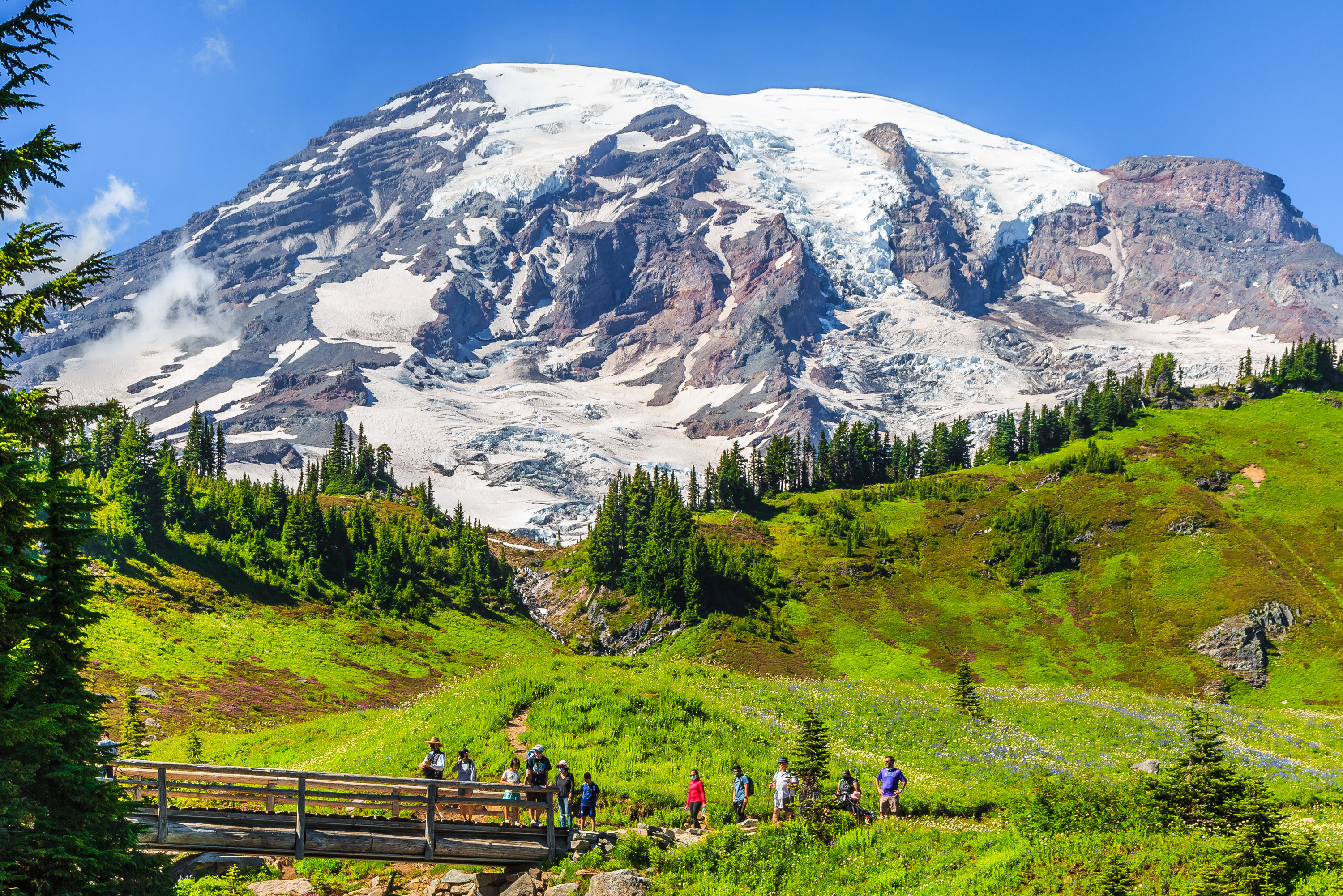Where to Go Sledding Near Seattle

Everyone's a kid on the sledding hill.
Seattle may not be known for its blizzards, but it is undeniably a winter sports town. We have snow nearby, we have mountains—and yet no one seems to know where a Seattleite can go sledding. What gives?
Despite the dozen ski areas across Washington, there are few accessible spots for the toboggan set. Most ski resorts ban sledding. Which means that before Summit East opens its chairlifts every year, families crowd the Snoqualmie Pass ski area despite the giant "No Sledding" banners posted at its base. The hunger for snowplay is so strong, you sometimes see impromptu sled hills on the Exit 42 onramp on I-90 (don't do this).
It doesn't mean there are no options, though; here's where to head.
Snoqualmie Pass
Summit at Snoqualmie has its own tubing hill with 20 lanes and a covered lift, but no personal sleds are allowed. Tickets must be purchased in advance but weekend days have been selling out in advance—even with tickets priced at $45–50 for taller kids and adults.
Nearby Hyak Sno-Park is a state-run area dedicated to snowplay: a groomed slope (sometimes) and heated bathrooms, but no supervision. Parking is $25 per day (or $50 for annual passes) and the area, given its proximity to the ski area, can get crowded. Asahel Curtis Sno-Park is a few miles closer to Seattle and also has a sledding area. Remember that most of the state's Sno-Parks, motorized and non, are not particularly meant for sledding; they may not be near hills, and routes are often designated for nordic skiers, snowmobilers, or even dog sledders. When stopping for snowplay, take care to wander the opposite direction from the ski tracks, dog teams, and brrrrrppping snowmobiles.
Leavenworth and Lake Wenatchee
A full two hours from the city, options expand near Leavenworth. The south section of Lake Wenatchee State Park has a DIY tubing hill, with the same parking fees as Hyak—but snow levels can vary, so it's worth calling the park to check for adequate coverage. The Leavenworth Winter Sports Club offers two separate slopes: a tubing hill with a rope tow and 100-foot drop (tickets cost $34 for six runs, with a webcam broadcasting current lines), and a separate walk-up sledding hill with a $12 fee (no metal runners).
Mount Rainier and Olympic National Parks
Our national parks contain some of the snowiest terrain in the state and are usually a solid bet; however the snowplay area at Paradise in Mount Rainier National Park doesn't always open; in 2024 the park announced that staffing shortages will keep it closed this year, and sledding in other areas of the park is prohibited due to the dangers of tree wells, avalanche, and other hazards. Snow, if not big slopes, can reliably be found outside the park at Silver Springs Sno-Park near Crystal Mountain Resort.
On the other hand, Hurricane Ridge at Olympic National Park—which gets an average of 400 inches of snow annually—will open its safe tubing hill this year ($24 for 10 runs, including tube, plus park entry fees), though the road from Port Angeles is only open weekends when crews can safely plow.
Stevens Pass
Though for a short time the Stevens Pass Ski Area's Nordic Center banned the practice, sledding is again allowed. The cross-country ski area is about six miles east of the chairlifts and lodges that make up the ski mountain, though parking here does fill up with downhillers on busy days. Walk-up sledding on the groomed slope is free and the Cascade Depot snack bar has warm drinks.
Your Own Secret Spot
Where to find solitude for your classic Red Ryder? The state is full of snowy slopes; forest roads at high elevations lead to quiet corners of the forest, and as you may remember from your summer hiking, hardly any part of the Cascades is truly flat. Be careful on snowy roads—park before the snow gets deep, not after—and don't expect to have cell service if you get stuck. Avalanche danger is rife on steep terrain, especially chutes; take a free virtual class from the Northwest Avalanche Center to learn how to avoid bad areas.
Of course, you could simply wait for the rare city snowfall to sled down Denny. But if you do find that coveted private, natural sledding hill deep in the woods, feel free to keep it a secret—or perhaps become the hero of your neighborhood play group.




